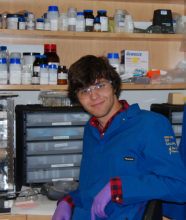
Major:
University:
Mentor(s):
Faculty Sponsor(s):
Faculty Sponsor's Department(s):
Project Title:
Project Description:
Large crystals, especially those composed of more than two elements, are both difficult to create – owing to the high pressures necessary -- and fundamental to the investigation of novel materials. Historically, advancements in crystal-growing techniques have presaged leaps in technological advancement – such as new forms of quantum magnetism, the development of a deeper understanding of high temperature superconductivity, and much more. Here, we detail the development of a new type of optical float-zone furnace: which will allow us to synthesize large, high purity crystals from materials that were heretofore inaccessible. The furnace, which employs lasers, should allow access to relatively high temperatures (3000°), heating gradients (150°/mm), and pressures (300 atm), beyond what previous, lamp based, designs could access. We are simultaneously constructing the furnace itself, synthesizing a number of polycrystalline rods to feed into it, and developing appropriate software to control the process. More specifically, we are synthesizing Lanthanum Cuprate, a relatively common superconductor, in both a lamp-based furnace and our laser-based furnace in order to provide a benchmark of the new furnace’s capabilities. Software development has focused on interfacing LabView software that will enable control over the furnace’s lasers, power output, and ramping rates – as well as an integrated motor and thermal camera. We hope to find that the furnace will produce the expected high-quality samples. Ultimately, the laser-based optical float-zone furnace presents an excellent way to produce otherwise difficult to manufacture crystals.
